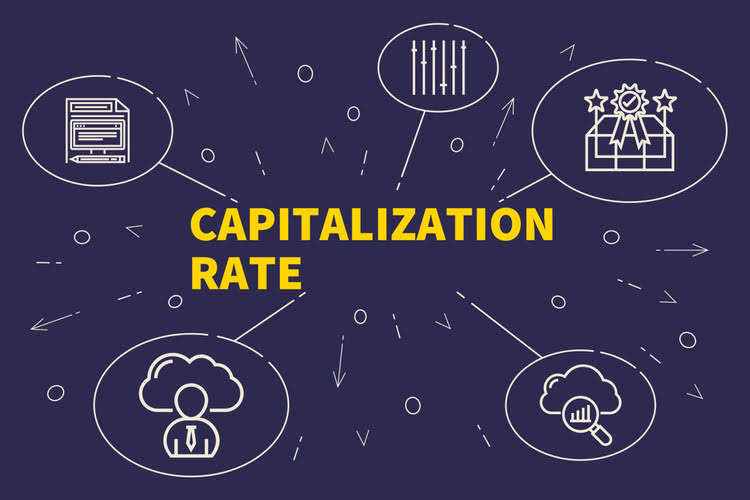
Double-entry bookkeeping is a key component of fund accounting, recording every transaction in at least two accounts to maintain the accounting equation’s balance. This system provides a comprehensive view of an organization’s financial position, aiding informed decision-making. Software like Blackbaud Financial Edge NXT and QuickBooks Nonprofit cater to these sectors’ unique needs.
Is financial aid available?
- Each source may have different conditions attached, influencing when and how revenue can be recognized in financial statements.
- Government entities must comply with statutory budgetary limits and procurement regulations, while nonprofits adhere to donor-imposed restrictions.
- This statement shows how public funds are utilized and the extent to which activities are funded by taxpayer contributions or other sources, such as grants.
- It’s madness to not look at a governmental financial statement just as you would for any other substantial investment given the amount of money you pay in taxes.
Blackbaud offers a range of tech tools for nonprofits, and its accounting tool, Financial Edge NXT, has powerful reporting, budgeting, and analysis capabilities. Financial Edge can do it all, from financial planning to grant accounting and fundraising campaigns. Plus, internal controls and other security protocols allow your system administrator to protect donor information through user access permissions. Nonprofit organizations adhere to the Financial Accounting Standards Board (FASB) guidelines, particularly FASB ASC 958, which governs the financial reporting of not-for-profit entities. This standard mandates the classification of net assets into unrestricted, temporarily restricted, and permanently restricted categories.

Accounting for Governmental and Nonprofit Organizations with Access 2nd
The statement of activities within the CAFR outlines the government’s revenues and expenses, highlighting the net cost of services provided. This statement shows how public funds are utilized contra asset account and the extent to which activities are funded by taxpayer contributions or other sources, such as grants. The balance sheet and statement of net position offer insights into the government’s financial standing, including assets, liabilities, and net position. Proprietary and fiduciary funds serve distinct roles within governmental accounting, each designed to manage specific types of financial activities. Proprietary funds operate similarly to private sector businesses, focusing on services provided to the public or other governmental units. Fiduciary funds, on the other hand, are used to account for resources held in trust or agency capacity for others, ensuring that these resources are managed and reported with care and transparency.

Requirements
- The primary reports are the Statement of Financial Position, Statement of Activities, and Statement of Cash Flows.
- Fund accounting segregates resources into various funds, each with its own set of accounts, to ensure money is used for its intended purpose.
- GASB Statement No. 34 requires governments to present both fund-based and government-wide financial statements, providing a comprehensive view of financial health.
- Lastly, we will cover governance issues that arise in nonprofit boards and discuss how to analyze financial statements.
- It typically includes a set of government-wide financial statements, fund financial statements, and notes.
Through performance measures, governments evaluate program outcomes against established goals. This helps improve service delivery and fosters accountability by providing evidence of resource allocation. For instance, a local government might track metrics like the cost per mile of road maintenance or the number of public safety incidents responded to within a specified time frame. The Financial Accounting Standards Board (FASB) provides guidance for nonprofits through the Accounting Standards Codification (ASC) 958, outlining revenue recognition principles.
The Statement of Activities details revenues and expenses, similar to an income statement, assessing operational success. These statements, prepared under GASB guidelines, ensure consistency and comparability across governmental entities. Nonprofits often use tools like ratio analysis and benchmarking to compare financial accounting for governmental and nonprofit organizations performance against industry standards or peer organizations.
Proprietary and Fiduciary Funds

This segregation is vital for meeting the requirements of stakeholders, including donors, grantors, and regulatory bodies. In the realm of federal grant accounting, it is essential to establish robust systems for tracking and reporting financial transactions related to the grant. This involves meticulous documentation of expenditures, adherence to grant terms and conditions, and regular financial reporting to the granting agency. Proper accounting ensures transparency and accountability, which are critical for continued funding and compliance.
- This involves recording assets at cost, depreciating them systematically, and periodically assessing their value for impairments or disposals.
- The principles of fund accounting are governed by standards such as the Governmental Accounting Standards Board (GASB) for public entities and the Financial Accounting Standards Board (FASB) for nonprofits.
- It also provides stakeholders with a clear understanding of the organization’s financial health and resource allocation.
- This dual perspective helps stakeholders understand both short-term financial positions and long-term fiscal sustainability.
- For example, a city government may have separate funds for general operations, capital projects, and special revenue like grants or taxes earmarked for specific uses.
- The FASB and OMB provide numerous written guidelines to help NPOs administer federal grants and complete required reporting.
Cambridge Business Publishers
Nonprofits began to primarily focus on the provision of social services to the middle class while for-profit organizations also began to provide services to the Bookkeeping for Painters same population. There has been a steady increase in demand for social welfare programs since the 1980s when government support increased. The increased demand for services increased competition between nonprofit and for-profit organizations and nonprofits began to look to private funding sources to remain competitive (Bourgeois, 2003).
Text Includes New Accounting Standards
Federal grant accounting involves meticulous management and reporting, often presenting several common challenges. Grantees must navigate a labyrinth of federal regulations, which can be overwhelming without specialized knowledge or experience. Federal grant accounting requires strict adherence to compliance and regulations set forth by government agencies. These regulations ensure that the funds are used appropriately and align with the grant’s intended purpose. Failure to comply can result in penalties, including the return of funds or disqualification from future grants. Risk assessment identifies potential financial, operational, or reputational risks, enabling mitigation strategies.
- Explore the core principles and practices of accounting in governmental and nonprofit sectors, focusing on financial management and reporting.
- These funds are categorized based on their purpose and the nature of the activities they support, ensuring that financial management aligns with legal and regulatory requirements.
- Federal grants are a significant source of funding for various public and private entities, including state and local governments, educational institutions, and non-profit organizations.
- In nonprofits, ratios such as the program expense ratio and fundraising efficiency ratio are particularly telling.
- The so-called “Great Society” programs came about in the 1960s including Medicare, Medicaid and training and employment programs.
- A structured budgeting process supports strategic planning and resource allocation, crucial for maintaining financial stability and achieving long-term objectives.

Managing capital assets and long-term liabilities is a key aspect of nonprofit financial management, impacting both the organization’s balance sheet and its ability to fulfill its mission. Capital assets, such as buildings and equipment, require oversight to ensure efficient utilization and proper maintenance over their useful lives. This involves recording assets at cost, depreciating them systematically, and periodically assessing their value for impairments or disposals. Governments and nonprofits often operate under strict budgetary constraints, necessitating rigorous monitoring of fund balances. Encumbrance accounting, where funds are earmarked for specific purposes before expenditures occur, ensures resources are not overspent.
